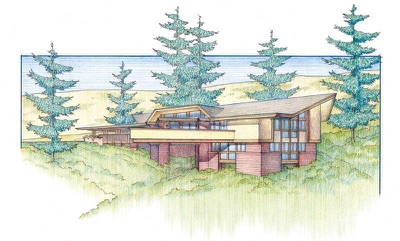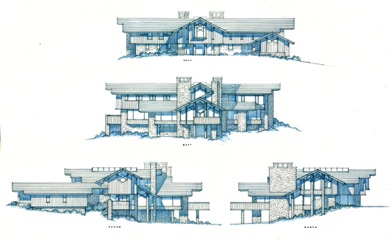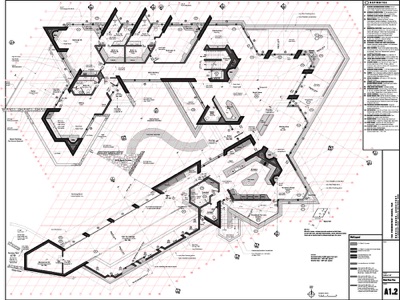A r c h i t e c t u r a l D e s i g n P r o c e s s
The design of your project will proceed and be expedited according to a standard method of organization, or set of phases, which serve to focus and regulate the effort along a path of a progressive and successive submission and decision-making process. Six basic phases are identified and described as follows:
Phase One / Programming - Establish the Project Idea
The Owner and Architect discuss the requirements for the project. The project criterion and design strategy are established. Project goals including design character, program of space need, functionality, budget, and time schedule are identified. CC&R and Design Review requirements are consulted for their influence upon the project (if exist). From this discussion, the Architect will prepare and submit a statement outlining the scope of your project.
Phase Two / Schematic Design – Creation of the Design
Through an evolution of sketches and diagrams, the building character will be created and shaped. Program and functional relationships are revealed in a preliminary Floor Plan, presenting the arrangement and sizes of rooms. The home in relationship to its site, including utilities, natural features, and view advantages, are presented in a Site Plan. The purpose of this Phase is a give and take between Architect and Owner as ideas are discussed, exchanged, and refined. The Schematic Design Phase can be swift or lengthy, depending on the project, the Owner, and the timetable. The plans will be revised and refined further based upon your input. Selections are made for primary materials, structure, building enclosure, lighting and mechanical systems. The completed schematic design will be illustrated via color-rendered plans, elevations, cross sections and perspectives. These documents are presented to the Owner and serve to define the size, appearance and scope of the work. A preliminary cost estimate will be prepared, including an appropriate design contingency, will be submitted at the end of the phase. Lastly, a presentation of the design is made to the Design Review Committee, if/as required.
Phase Three / Design Development - Define Design and Building Components in Detail
Based on the approved Schematic Design documents and any adjustments authorized by the Owner in the program, schedule or construction budget, the Architect shall prepare, for approval by the Owner, Design Development documents consisting of drawings and other documents to fix and describe the size and character of the Project as to architectural, structural, mechanical and electrical systems, materials and other such elements as may be appropriate. Architectural design services during the Design Development Phase shall consist of continued development, refinement, and expansion of architectural schematic design documents to establish the final scope, relationships, form, size and appearance of the Project. All materials, products and colors will be selected. An updated cost estimate is prepared to review changes to the scope and quality of the work before construction documents are started. An end-of-phase submission of drawings are submitted for the Owner’s approval. Final submittal of design to a Design Review Committee if/as required.
Phase Four / Construction Documents - Communicate the Design Intent
Once authorized by the Owner, based upon the approved Design Development Documents including authorized adjustments, the Architect shall prepare Construction Drawings and Specifications for approval by the Client. The design intent is communicated to the building industry by delineating the scope of the work in detail. Dimensioned and annotated plans, sections, elevations, details and schedules are produced for the use of the Builder. Project Specifications (written documents which describe the building construction technology required through type and quality) are prepared as a component of the Construction Documents package. The consulting Engineers’ final documents are reviewed, coordinated, and incorporated into the Construction Documents package. The Architect assists the Owner in filing these required documents with the Building Department for their review. The Architect will make any adjustments to the drawings as required by this agency in order to obtain their approval and the Permit for construction.
Phase Five / Bid And/Or Negotiation - Finding The Builders
A contract may be either bid by a number of contractors or negotiated with an individual builder. The Architect will help you choose which is the most appropriate path for your project and then help evaluate contractors. Bidding requires organization, to ensure each General Contractor gets the same information throughout the process and gets their questions answered in a timely way. On the other hand, an Owner may choose to include a pre-qualified General Contractor as a member of the design team. The Contractor may be paid a fee for consultation during design. A method of compensation for the construction work is negotiated when the design has progressed in sufficient detail to serve as a basis for a cost proposal.
Phase Six / Construction Administration - Building Your Project
During construction, the Architect visits the site to observe the work in progress and evaluate such for compliance with the Contract Documents. This service is especially important. The Contractor's failure to construct what has been designed can have major consequences for the Owner. The Architect is your agent on site and with the Contractor, to represent your interests and check to see that construction is consistent with the approved drawings. The Architect is in constant contact with the Contractor to address any questions and provide written or drawing clarification to the Contractor as the need arises. Typically, communication between Owner and Contractor is primarily through the Architect. This minimizes confusion and allows the Architect to analyze whether or not any changes may affect other parts of the project. However, one of the most important things an Architect does during this phase is solve problems. Building is not a trouble free process. When problems arise, it is crucial that the Owner, the Contractor, and the Architect work together to find solutions.



